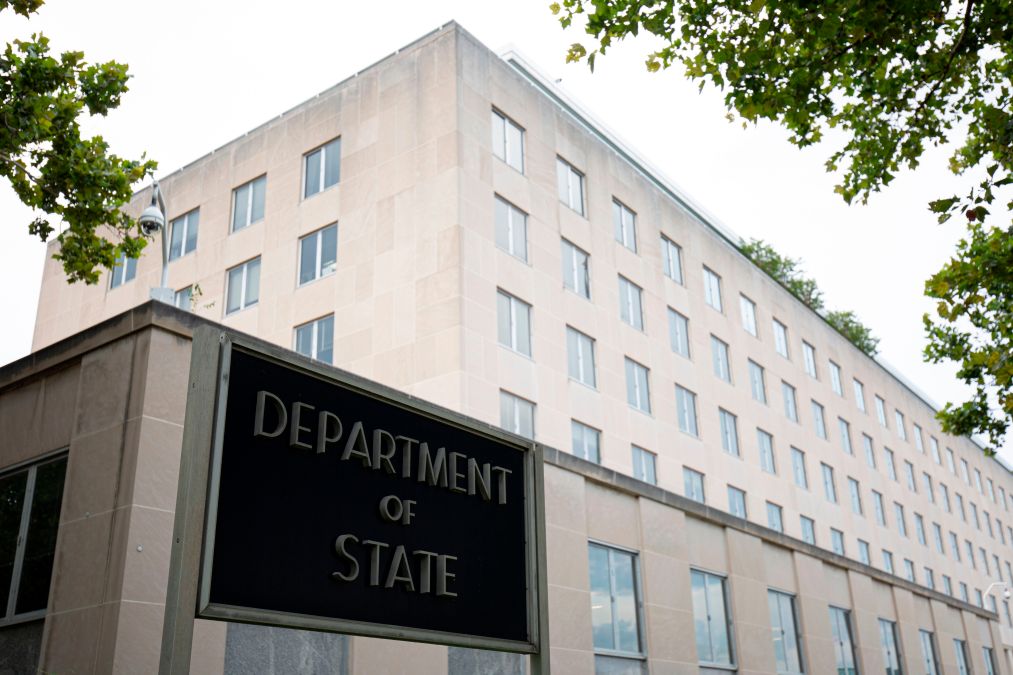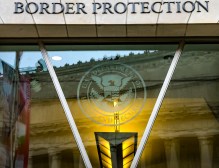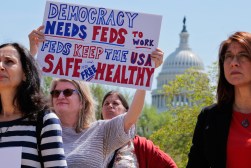State Department layoffs cut science, tech offices deeper than anticipated

A reduction-in-force at the Department of State on Friday cut more people in science and technology bureaus than previously expected, casting uncertainty over the future of diplomacy in those areas.
While the broader departmentwide RIF was anticipated following public announcement of the plans in April and a notice the agency sent to Congress that outlined impact, those disclosures didn’t forecast the full scope on science and tech functions, resulting in some surprises and confusion for staff Friday.
That’s left impacted employees unsure about the future of the department’s work representing the interests of U.S. science and technology agencies in international negotiations, three State Department officials who were included in the RIF told FedScoop.
Those workers, who spoke on the condition of anonymity to be more candid, cited concerns about the future of international science and technology agreements, U.S. scientists’ access to international research and development facilities, advocacy for American interests on issues such as protecting researcher data, and the nation’s efforts to win the AI and quantum development race with China.
“Tech isn’t just about private-sector development and advancement. This is a global world, and the government just eviscerated its best international expertise,” said one of the sources, who was a diplomat.
Cole Donovan, an associate director at the Federation of American Scientists, told FedScoop he’s concerned that the cuts to science and technology roles is also a potential signal that the department plans to back out of international treaties and agreements in that area.
“I don’t think that there’s any rational reason to cut offices to this degree if you’re expecting the same workload that you have before,” said Donovan, who previously worked at STC for 10 years, mostly as a foreign affairs officer.
Personnel impact
Among the specific areas impacted, the Office of Science and Technology Cooperation (STC) was eliminated entirely, resulting in the separation of roughly 17 civilian officials, foreign service officers, and contractors, two impacted sources estimated. Though they noted that contractors are technically still working with varied expected end dates.
While the effect on that specific office and its workers was anticipated, the RIF also resulted in the termination of multiple officials at the Bureau of Cyberspace and Digital Policy (CDP), which is focused on the country’s economic security, and the Office of the Special Envoy for Critical and Emerging Technology (S/TECH), which is focused on technologies like AI and quantum. Those layoffs weren’t expected, per the sources.
In the RIF notice sent to lawmakers, the department disclosed plans to eliminate S/TECH, STC, as well as the Science and Technology Adviser, and said their functions would be absorbed into CDP. The cyber bureau, meanwhile, would be relocated under a newly renamed bureau known as Economic Growth, Energy, and Environment, per copies of that document published by Federal News Network and Drop Site News. FedScoop independently confirmed the authenticity of that document.
Despite expectations S/TECH positions would be moving to the restructured cyber office, one source said most of the subject matter experts at the bureau were eliminated. The sources didn’t have estimates of the staff cuts at the cyber bureau, though NextGov also reported multiple losses from CDP on Tuesday.
All three sources, however, confirmed to FedScoop that in some cases, employees at the science and tech cooperation office who were preparing for the RIF were offloading their work and responsibilities to workers in the other units only to learn Friday that some of those employees were also being laid off.
In an emailed response to a FedScoop inquiry about the cuts, a State Department spokesperson said that the RIF was “tailored to preserve critical core functions” and ensures work related to “related to security, consular services, and regional desk responsibilities” won’t be impacted while the reorganization is ongoing or after it’s over. The spokesperson also said that mission-critical work and personnel were being retained and integrated elsewhere at the agency
“Many of the offices that we plan to eliminate originally were created to address specific needs. But the world has changed,” the spokesperson said. “As we looked comprehensively across the Department, we saw that many of these offices had served an outdated purpose, had strayed from their original purpose, or were simply duplicative.”
Redundancies, surprises
Although plans for the layoffs were drawn up earlier this year in accordance with President Donald Trump’s direction to agencies across the federal government to prepare for RIFs, such plans were enjoined by a federal district court order. The Supreme Court, however, lifted that injunction last week, allowing layoffs across the government to move forward.
On Friday, the State Department started moving on its plans again. According to a notice sent to employees that was viewed by FedScoop, nearly 3,000 agency workers were impacted as a result of the departmentwide RIF and restructuring. Those employees include 1,107 civil service service workers and 246 foreign service officers stationed domestically, per the notice.
According to Secretary of State Marco Rubio’s statement announcing the RIF blueprint in April, the purpose is to address rising costs and “less effective and efficient diplomacy” at the department.
Merry Walker, a foreign service officer previously at S/TECH and was also detailed to the White House at the beginning of the Trump administration, said that when the plans were previewed, she saw the logic in a reorganization because there were some redundancies in science and technology functionalities.
But the resulting offices and positions that were cut Friday came as a surprise. Artificial intelligence teams were laid off, for example, despite the administration’s emphasis that AI is a priority and a forthcoming AI Action Plan, which will very likely include international strategies, she said.
“In order to execute the policy from the White House, you need to have the operational staff to be able to carry out what’s happening, carry out the overall direction from the White House, particularly in emerging technologies such as AI,” Walker said.
The State Department plays an especially important role in ensuring that the U.S. has the best global research talent as it’s the agency responsible for approving visas, and various emerging technology areas in the U.S. rely heavily on foreign talent, Walker said.
If conversations between government, the department and industry falter, she said, “we can inadvertently completely miss the target and stifle the ability for our innovators to innovate.”
Donovan similarly noted that science and technology is an area that relies heavily on international agreements and memoranda of understanding. “There are just a lot of very small arrangements that kind of hold the international system of science together, which is largely based on trust,” he said.
Leaving very few State Department workers to address that area raises questions about whether the U.S. will be able to prioritize domestic projects that require international contributions, he said.
Survey ongoing
To capture some of the expertise of the impacted officials, Donovan is currently working to survey impacted officials in anonymous exit interviews for the Federation for American Scientists. Donovan and colleagues are looking to get responses to that survey by July 31 and plan to compile and share what they’ve learned in August.
Those efforts aim to get a better sense of the impact of the RIF and provide insights from those who were laid off on what does and doesn’t work in science and tech diplomacy. So far, Donovan said he’s heard examples of successes as well as areas where the government could improve.
“What we’re losing is people with that experience who can speak to the areas where things can actually be done significantly better,” Donovan said.






